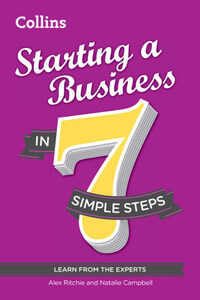‘The secret of getting ahead is getting started.’ — Mark Twain (1835–1910), American author
Start a business you believe in.
Use your skills, experience and contacts.
Be ambitious with your vision and aims.
Identify what differentiates your business – your USP.
Understand your market and customers.
Underestimate your customer.
Believe you’ll get rich quickly.
Assume you can work all day, every day.
Fail to make the most of your network.
Ignore the tax man.
What kind of business will you run?
So, you know that you want to run your own business. You have a few ideas in mind that get you excited but how do you decide where to start?
Your passion, skills and experience
Take a good look at yourself. Is there something you’re particularly passionate about? Have you always wondered whether you could turn your passion into a business? You may have a talent or skill which would enable you to start a business in a certain field, such as hairdressing or baking. Or you might be a professional, such as a lawyer, dentist or physiotherapist, and have realized that, rather than working for someone else, you now have the skills and experience to set up your own practice. Alternatively, you have identified a problem in your community that you think you might just have a solution for, or maybe you’ve come up with an idea that would make your life or the lives of others much easier. These could be a great starting point for deciding what your business will be. Dame Anita Roddick started up her business, The Body Shop®, after realizing a passion for producing and retailing beauty products that prohibited the use of ingredients tested on animals. Maurice and Charles Saatchi founded the advertising agency Saatchi and Saatchi after gaining years of experience and skills, along with influential contacts in the world of advertising.
Got a few ideas – now what?
If you have one or more ideas that you think you’d like to try, draw up a list of pros and cons. Think about all aspects of the business, such as the number of hours per day you’ll need to work and the cost of any necessary equipment. Running a café will require a different amount of time to setting up as a consultant. Estimate how much money you’re likely to make and what your running costs are likely to be.
List everything you can think of; you may find that some items appear as both a pro and a con. Once you have your list, go through each point, particularly the cons, and think about the implications. Are they small hurdles or big issues? Do you have any solutions?
Idea 1: Artisan bakery
Pros:
I love to bake and experiment with new culinary ideas.
There’s nothing similar in my local area.
It has good profit potential.
I could set up an online offering alongside the shop.
I could sell to consumers as well as to cafés or restaurants.
I’d need premises.
I’d need to work long hours to make it work.
There would be high start-up costs.
I’d need to understand food hygiene and health and safety.
I’d need to monitor fluctuating prices for ingredients.
The unique selling point (USP)
What makes your chosen business different from the others out there in the same sector or marketplace? Consider what might make your potential customers buy from you rather than your competitors: what makes you different, and is there a genuine need for your product or service?
Have a look around at the competition and use the internet or business sections of your local library to research your competitors. Consider different ways you might differentiate your business. For example, you could offer:
high quality customer service.
fast or free delivery on goods.
cheaper prices.
additional support packages, such as free telephone support.
highly qualified staff.
creative or new services.
Is there a need for your business?
Have you spotted a gap in the market? Maybe there’s no one else providing these goods or servicing your potential marketplace. A word of caution here: the gap may be there for a good reason. Maybe it’s not a financially profitable offering because the marketplace for these goods or services is just too small, or the manufacturing or shipping costs are very high. Research the need for your business and check out whether it has been tried before and if so, why those businesses failed or moved out of the market.
You’ve chosen the idea – what’s next?
You should create a vision for your business. Your vision is what you describe to people when explaining your idea, and it should be easily understood by those you want to sell to. It can be big and aspirational or it can be succinct and to the point. It should be your inspiration for the future of the company. It’s worth reading about the vision your competitors have or the vision behind brands that you really like; this will give you an understanding of what might work for your business. For example, when Bill Gates first started Microsoft, he envisioned a personal computer in every home and business.








